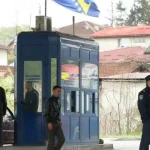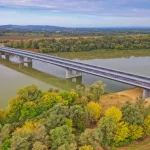As Glas Slavonije writes, on the first day of next year, border controls towards EU member states will be abolished, and border ramps will go into history. This, however, does not mean that, if necessary, they cannot be closed again.
The stalls remain
The infrastructure at the border crossings, such as the stalls for checking documents, will remain in their current locations, but there will be no police or customs controls there. Kilometre-long queues of heavy trucks that used to form daily on both sides of the Dubosevica – Udvar border crossing will go down in history, at least for now. For the people of Baranja, for example, it will be much easier to go to Mohac and Pecs, which they will be able to reach quickly, just as they go to Osijek, without stopping.
Robert Jankovics, a member of parliament of the Hungarian national minority, who was also involved in the process of “abolishing borders”, agrees. “The entry into the Schengen area is one of the great successes of the Government of the Republic of Croatia, achieved thanks to political stability, in which we from the Hungarian community in the Republic of Croatia also helped. The very fact of the entry of the Republic of Croatia into the Schengen area means a lot both for Hungarians in Croatia and for all Slavonians and the people of Baranja, who will no longer have to wait at the border. We will see additional benefits, I hope very soon, with the completion of the full profile of corridor 5C through Croatia, i.e. Baranja,” says Jankovics, continuing that all this provides great opportunities for everyone who lives here – to live better.
On a smaller scale, he emphasises that people who migrate every day because they go to work in Hungary will benefit the most. There are few of them for now, which does not mean that there will not be more of them in the future. Speaking about his participation in the whole process, he says that he did what he could and what was within his authority. He also conveys parts of parliamentary political discussions about the future of border policemen and customs officers, emphasising that it was promised that no one will be out of a job and that their wages will not be reduced.
Furthermore, Croatia’s entry into the Schengen area opens up several more possibilities. First of all, a greater number of “border crossings”. More than 10 years ago, Glas Slavonije wrote about the need to build a road between Knezevo in Baranja and Sarok in Hungary. At that time, the Hungarians had already built a road from Sarok to the border with Croatia, but it turned out that the road – lead nowhere. In 2009, the leaders of the Popovaca municipality were invited to neighbouring Sarok for a discussion about the future road, and even the Hungarian Minister of Transport was at the meeting. The idea sounded great, especially since the two places were connected for centuries because they were in the same country, Austria-Hungary when they were connected by a macadam road that can still be seen today.
Connectivity and development
Although there are only three kilometres of road from Knezevo to the border, the project was halted from the Croatian side, with the explanation that everything would be started when Croatia enters Schengen, which was also confirmed by the higher levels, announcing at that time the construction of a total of 17 crossings, including Knezevo – Sarok, after Croatia becomes part of the Schengen area.
“Now is the time to revisit the issue and intensify it. I would like the whole story to end satisfactorily and for Baranja to get another border crossing. The two crossings on the future motorway and the one between Knezevo and Sarok would serve the population on both sides of the border, and Baranja would reach the level of Western Europe in terms of connectivity. Between Belgium and Germany, for example, there is a border crossing every 10 kilometres,” explains Jankovics, emphasising that transport connectivity enables faster development, especially since the southernmost parts of Hungary and the northernmost or northeastern regions of Croatia are among the most underdeveloped areas of the two countries because they are a sort of dead end where “bus turning points” because they have nowhere to go. The new border crossing, along with the motorway, will mean the opening of Baranja to Europe.
For more, make sure to check out our dedicated Travel section.











